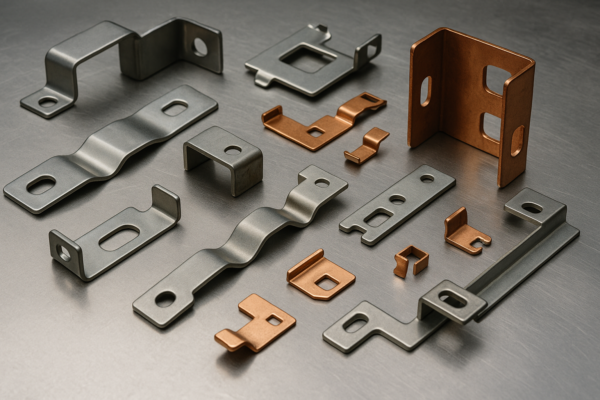How do I become a sheet metal worker?

Becoming a sheet metal worker requires technical training, hands-on experience, and a strong focus on precision and safety.
You can become a sheet metal worker by completing an apprenticeship, gaining hands-on training, and learning how to work with metal fabrication tools.
Stay with me. I will guide you through the full process, from learning the skills to understanding the career path and earnings.
How to become a sheet metal worker?

Starting a career in sheet metal work involves a mix of education, on-the-job training, and sometimes formal certification.
To become a sheet metal worker, you typically need a high school diploma, followed by a 4–5 year apprenticeship that combines training and work experience.
Steps to Becoming a Sheet Metal Worker
| Step | Description | Example |
|---|---|---|
| 1. Complete High School | Focus on math, blueprint reading, shop classes | Basic measurements, tool handling |
| 2. Join an Apprenticeship Program | 4–5 years combining classroom and fieldwork | Paid learning under experienced workers |
| 3. Learn Key Skills | Cutting, bending, welding, safety procedures | Brake press operation, layout design |
| 4. Get Certified (Optional) | Certifications like OSHA, welding licenses | Boosts employability and pay |
| 5. Gain Experience | Work on real-world projects | HVAC installation, structural work |
At Prime, our "custom stamping parts supplier" teams consist of highly skilled professionals who went through rigorous training, ensuring that every product we deliver meets ISO standards.
One of our senior fabricators started his apprenticeship right out of high school and is now leading teams on international projects.
How do you join sheet metal?

Joining sheet metal pieces together requires different techniques depending on the material, design, and strength needed.
Common methods to join sheet metal include welding, riveting, bolting, soldering, and using adhesives or fasteners.
Sheet Metal Joining Techniques
| Joining Method | Best Use Case | Example |
|---|---|---|
| Welding | Permanent, high-strength joints | Structural frameworks |
| Riveting | Quick, strong joints without heat | Aircraft panels |
| Bolting | Detachable connections | Machinery guards |
| Soldering | Low-temperature joining for small parts | HVAC ducts |
| Adhesives | Lightweight, non-structural bonds | Decorative panels |
At Prime, we carefully select the best joining method for each project. Whether producing "precision CNC parts machining" components or large sheet metal assemblies, we ensure durable, reliable connections.
One client needed aluminum panels joined without warping. By using specialized rivets instead of welding, Prime provided perfect results without material distortion.
What is the average age of sheet metal workers?

The sheet metal trade attracts workers of all ages, but most professionals are well into their careers.
The average age of sheet metal workers in the United States is about 44 years old, showing it’s a career that people stay in long-term.
Age Demographics in Sheet Metal Work
| Age Range | Percentage | Characteristics |
|---|---|---|
| 20–29 years | 18% | Apprentices, early career workers |
| 30–44 years | 35% | Peak working years, experienced fabricators |
| 45–60 years | 37% | Supervisors, foremen, lead technicians |
| 60+ years | 10% | Senior consultants, part-time workers |
At Prime, we value the experience that seasoned workers bring, and we encourage young talent to grow into leadership roles — blending tradition and innovation on our "ISO certified casting parts manufacturer" and sheet metal teams.
One of our factory managers, a 30-year industry veteran, now trains the next generation of workers, ensuring Prime’s legacy of quality continues.
How much does sheet metal make?

Sheet metal work offers competitive wages, especially for those with specialized skills or union membership.
Sheet metal workers in the U.S. typically earn between $50,000 and $80,000 per year, depending on experience, location, and union affiliation.
Earnings Overview for Sheet Metal Workers
| Experience Level | Average Annual Salary | Notes |
|---|---|---|
| Apprentice | $30,000–$45,000 | Earn while learning |
| Journeyman | $55,000–$75,000 | Full pay rate after certification |
| Supervisor/Foreman | $75,000–$90,000+ | Oversees teams and projects |
In high-demand regions like New York and California, wages can be even higher, sometimes exceeding $100,000 per year when factoring in overtime and benefits.
At Prime, understanding wage trends helps us deliver cost-effective "custom stamping parts" while still maintaining top-tier quality and production standards.
One of our California clients noted that Prime’s precise parts helped them avoid costly rework and overtime — saving thousands on high-wage job sites.
Conclusion
Becoming a sheet metal worker is a rewarding career path that offers strong income potential, hands-on skills, and long-term growth opportunities. Contact Prime today for ISO-certified sheet metal parts, fast delivery, and expert support that helps your projects succeed from the ground up!







